Scottish Fold Cat Breed Information
-
December 18, 2024
-
By: Anna
-
471
Scottish Fold Kittens Full Breed Information
The smart and friendly Scottish Fold kittens loves playing with challenging, puzzling toys to test her intelligence. She also loves human interaction with her people and loves attention. Scottish Folds prefer the company of their humans or other cats (or cat-friendly dogs), rather than being left alone for hours at a time.
Size
Medium: Males weigh 9 to 13 pounds, while females weigh 6 to 9 pounds.
Coat
- Longhair: Medium-long.
- Shorthair: Medium-short, dense, and plush.
Color
Available in white, black, blue, red, cream, and silver, with various patterns and shadings.
Scottish Fold Kittens For Sale
Ray – Male Scottish Fold Kitten
Emma – Male Scottish Fold Kitten
Temperament
You may find this outgoing feline perched in strange postures, like lying flat on the floor with her legs splayed out, on her hind legs, sitting up like a meerkat or lying on her back, paws in the air.
Characteristics
A natural genetic mutation creates the unique folded ears for which Scottish Folds kittens are known, but their ears work just as well as any other cat’s. They’re often described as resembling an owl. The ear folds range in appearance from a loose, single fold to tighter double and triple folds, which are closer to the head. Their folded ears may also appear perked. The Scottish Fold has a round face, round eyes and a round body.
Lifespan
11 to 15 years
Colors
The dense, plush and soft coat of the Scottish Fold comes in a full range of colors and patterns, including solid, tabby and more. Their coat color often dictates their eye color. For example, a white Fold will have blue eyes, whereas a red or brown tabby may have copper-colored eyes.
Shedding
Scottish Fold kittens shed year-round, with heavier shedding periods during the spring and fall. Comb shorthaired Folds weekly to remove loose hair. Longhaired Folds may require grooming several times a week.
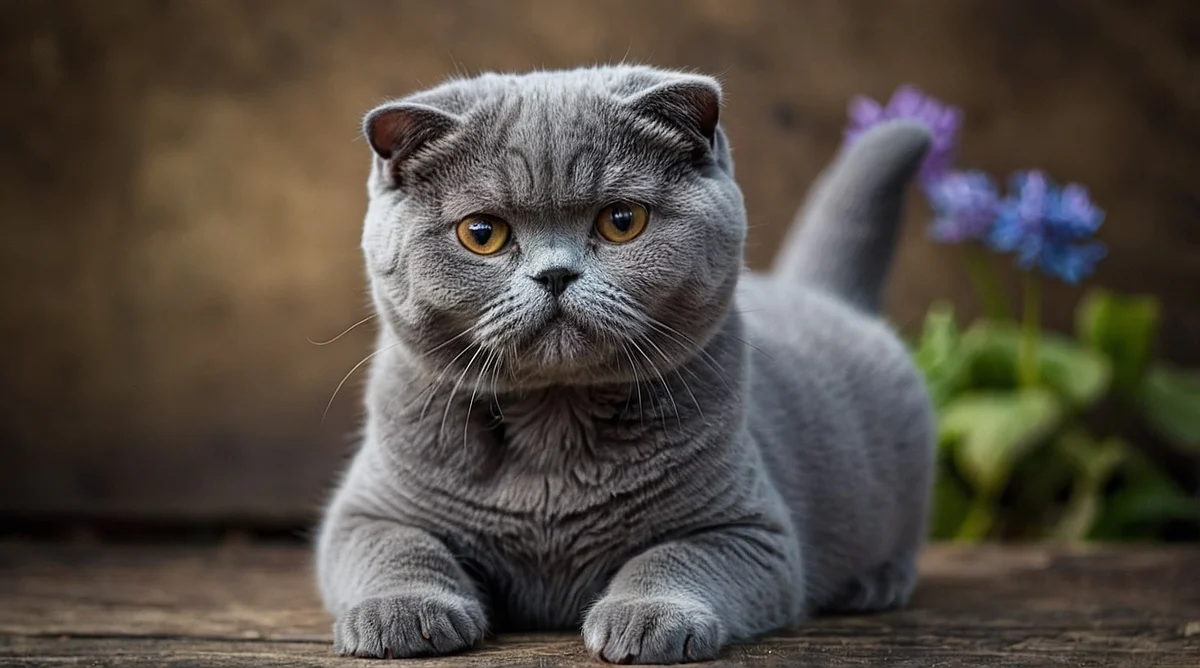
Health
Although responsible breeders do their best to eliminate serious diseases, the Scottish Fold kittens may still suffer from degenerative joint disease, particularly in her tail, ankles and knees, as well as hypertrophic cardiomyopathy. Her folded ears make her more susceptible to ear infections.
Choosing the Best Food for Scottish Folds
Although Scottish Folds have a predisposition for joint disease, keeping your cat at a healthy weight can minimize the potential for future joint pain. Additionally, certain cat foods contain nutrients that promote healthy joints. Options like Pro Plan Weight Management Chicken & Rice Formula or Purina ONE Healthy Metabolism will help your Fold maintain a healthy weight.
To explore other products for your Scottish Fold, see our Product Selector.
Choosing the Best Food for Scottish Fold Kittens
Like any other breed, Scottish Fold kittens have specific nutritional needs to aid in their growth and development. Look for a complete and balanced kitten food like Purina Kitten Chow Nurture, Pro Plan Kitten Chicken & Rice Formula or Purina ONE Healthy Kitten to provide her with all the essential nutrients she’ll need to grow healthy and strong.
History
Every Scottish Fold can trace her heritage back to a barn cat named “Susie”. She was a white cat with unique, folded ears, working as a mouser in a barn in the Tayside region of Scotland. She got the attention of William Ross, a shepherd, in 1961. He was given one of Susie’s kittens and named her “Snooks”.
When Snooks eventually had kittens, one of the males was bred with a British Shorthair, which began the breed’s development. The mutated gene that results in the folded ears is dominant, so it produces the trademark ear folds about 50 percent of the time. In addition to this gene, Susie also passed down a gene for long hair. Longhaired cats are known as “Highland Folds” with some cat associations.
Scottish Folds weren’t imported to the United States until the Early 1970s. By the mid 70s, they were recognized by most cat associations throughout North America.
Facts
- Scottish Fold kittens were first known as “lop-eared cats”.
- They are not recognized as a breed in Scotland due to concerns about an increased risk of ear infections and deafness.
- Kittens are born with straight ears and the folds appear around 3 weeks of age. About 50 percent of a litter will have folded ears.
- Only Folds with folded ears are permitted in show rings.

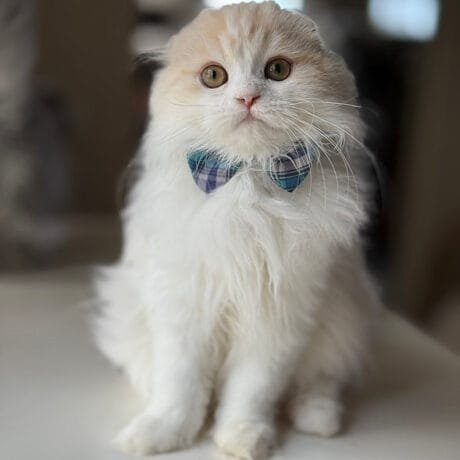
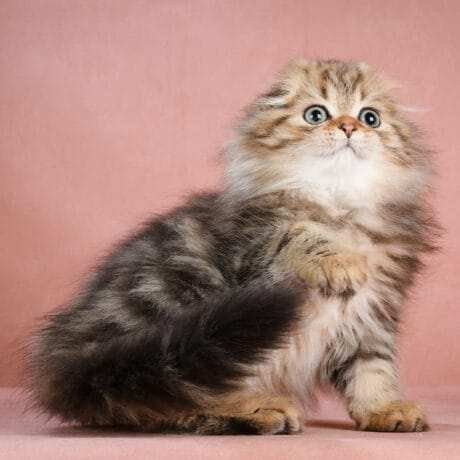
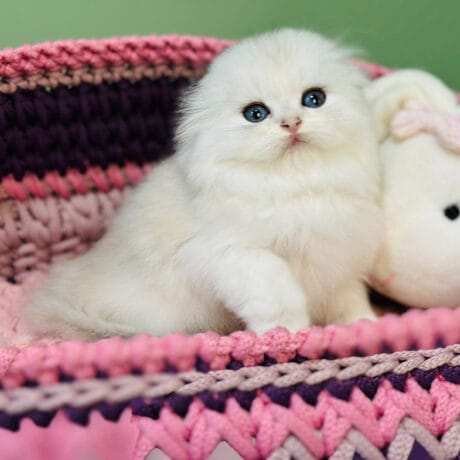

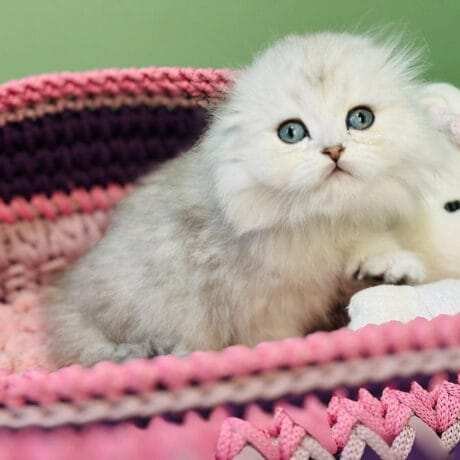
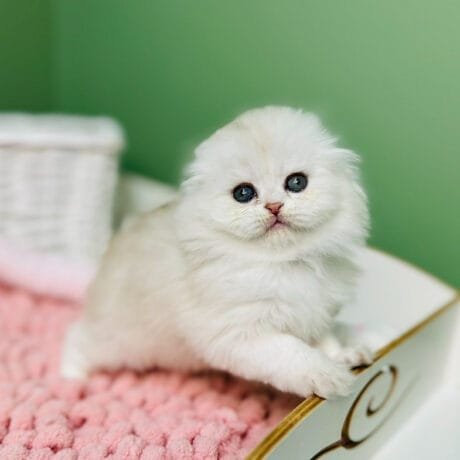
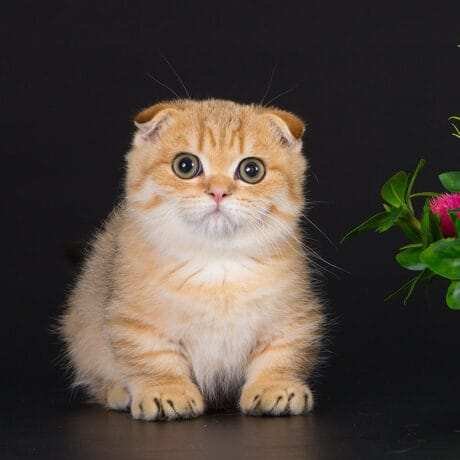
Leave a comment